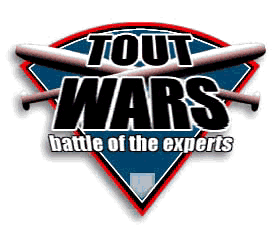 I used to derive my preseason prices from my projections. I modeled the stats for the whole season and priced players as if that’s what really happened. This worked pretty well, because they were based on projections made in March, which were about as solid as could be, incorporating a lot of spring playing time info.
I used to derive my preseason prices from my projections. I modeled the stats for the whole season and priced players as if that’s what really happened. This worked pretty well, because they were based on projections made in March, which were about as solid as could be, incorporating a lot of spring playing time info.
But when we started the Fantasy Baseball Guide I quickly realized that little differences in projections could make big differences in prices. Suddenly some savvy judgements in November that weren’t exactly right became howler prices in January, when the magazine arrived. But the issue wasn’t really the accuracy of the projections, it was the idea of pricing the projections at all.
Projecting player performance is an important part of my draft prep process, but far more important is the assigning of Bid Prices. This is an allocation of $3120 to 108 pitchers and 168 hitters. For The Guide I go through the list of players looking at their past earnings, their past costs, and what their projected stats are worth. A give everyone I think should have a positive value a price, and then I count up how many players I gave prices and I add up how much money I assigned to them, and then make adjustments until it all adds up. (Actually, in the Guide, I don’t worry about having a few too many $1 players, since there are so many who are borderline—worth a dollar if they win a spot, but not certain to win spots. That’s a symptom of an early deadline.)
Having an idea of what a player is going to earn is important, but so is having an idea of what the crowd is going to be willing to pay. In this year’s Fantasy Baseball Guide there is an excerpt from Larry Schechter’s excellent Winning Fantasy Baseball: Secret Strategies of a Nine-Time National Champion, in which he explains how to compare your bid prices to those of other auctions and experts, to better identify bargains and the players you’re unlikely to get.
Larry then double and triple checks his expectations for the players it looks like he values more than others, making sure his projection and value for the player is truly reasonable and warranted.
For my part, I want my bid prices to reflect my expectations for the market. If I think a guy is going to earn $19 but it looks like others value him at $16 I’ll probably knock my price down a dollar or two, so that I can budget the expected savings elsewhere. But this is a tricky business, because someone in your league might be willing to go to $17 but not $18. Efficiency, evaluation, and enthusiasm have to be carefully balanced.
Below is an example of last year’s ranking of top first basemen. PK is my Bid Price. CBS, LABR and TW are the actual expert league prices. Consensus is the average of the expert leagues. Earned is what they actual earned during the season. I play in Tout Wars NL, so when I bought Joey Votto for $37 I thought I had a small bargain.
Commercial Interruption: One of the features of the software and data package that Alex Patton and I sell each spring is the inclusion of the auction prices from the CBSsports, LABR and Tout Wars expert leagues, as well as our own 5×5 and 4×4 prices, which makes it easy to make such comparisons while making your own bid prices.




You must be logged in to post a comment.